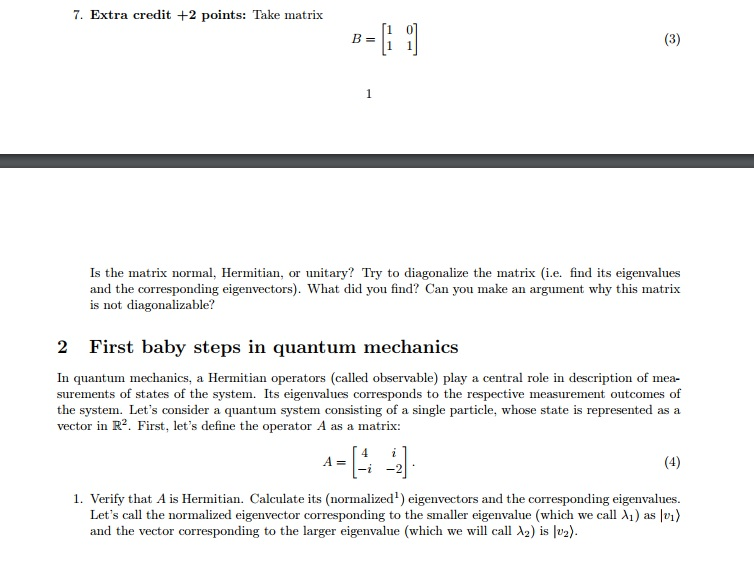
I.” We can simplify the result greatly by setting Digits to 6 and using the command simplify. So tryĮ ≔ Eigenvalues(evalf(H)):The result is still complicated, because maple’s default procedure is to keep 20 significant figures in the eigenvalue computation and to write all the output in complex form, causing each of the eigenvalues, all of which are real, to include a term “ + 0. Under most conditions it is advisable to seek a solution in decimal form.

> E ≔ Eigenvalues(H) E ≔ - 3 - 2 3 + 2 - 3 + 2 3 - 2We were fortunate in that the result was not extremely complicated. > with(LinearAlgebra):Let’s first just look at the eigenvalues: Using maple first, we define H and access the LinearAlgebra package: Let’s obtain the eigenvalues and eigenvectors of H = 1 2 0 0 2 0 1 2 0 1 0 0 0 2 0 - 1. Degenerate eigenvectors will be normalized and linearly independent but not necessarily orthogonal to each other.Įxample 5.5.4 Symbolic Computation, Eigenvalue Problem If a matrix whose eigenvectors is sought is given in decimal form, both languages produce normalized eigenvectors. In this sense we can say that two of the four components of Dirac spinors are needed to distinguish between spin-up and spin-down states and two components are needed to distinguish between positive and negative energies. The doubling of the two components is only necessary to describe whether the solution has positive or negative energy, because the ratio between upper and lower components is typical for the sign of the energy. Hence two spinor components would indeed be sufficient to describe the spin-properties of a solution. In the nonrelativistic limit, only two of the four spinor components survive.Īs you can see from (40), the helicity is determined by the upper (or lower) components alone. In the nonrelativistic limit p→ 0 the lower components of the positive-energy solution tend to zero (as do the upper components of the negative-energy solution).

For very high energies (that is p→ ∞), the absolute values of upper and lower components become more and more similar. For a solution with positive energy (in the standard representation), the upper two components are always larger in absolute value than the lower two components (because a +( p) ≥ a −( p), while for negative energies the relation between upper and lower components is reversed. ∇ ) u …, p ± ( x, t ) = ± | p | u …, p ± ( x, t )įrom the explicit form of the ω … ±( p) we see the following. However, there is a geometrical interpretation of the SVD which is exceptionally well suited to this task. Physical constraints cannot be easily incorporated into factor analysis receptor models through the formalism of transformations as presented above. For example, the transformed results often give negative source compositions which are difficult to interpret physically. They transform the abstract eigenvectors to other abstract solutions that do not guarantee the transformed results are physically meaningful.

However, as Henry (1987) and Lowenthal and Rahn (1987) pointed out, these transformation methods cannot be relied upon to produce results consistent with physical reality. There are several different transformation methods, such as orthogonal transformations which preserve the statistical independence of the factors (VARIMAX, QUARTIMAX, PROMAX), and oblique transformations which allow the factors to be dependent (OBLIMIN, target transformation).
#Eigenvectors mathematica how to#
The question is how to find such a transformation matrix. Therefore, the ultimate objective of the model is to determine one unique transformation matrix, T. Theoretically, an infinite number of transformation matrices could explain the ambient data equally well. The transformation matrix in receptor modeling serves as a mathematical bridge between the eigenvectors and the source compositions.


 0 kommentar(er)
0 kommentar(er)
